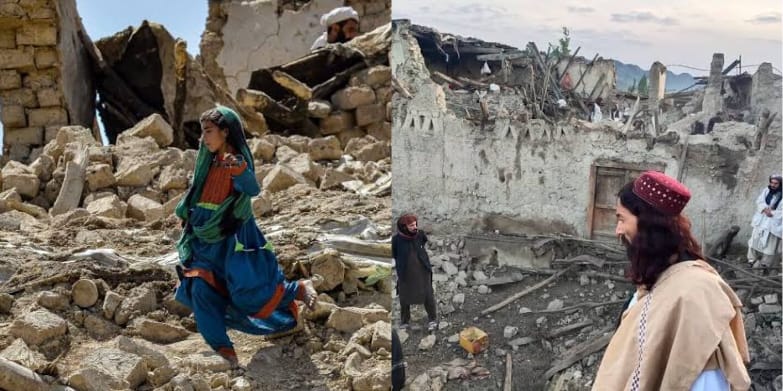In a devastating incident that shook Afghanistan to its core, powerful earthquakes struck the country, leaving a trail of destruction and despair in their wake. The Taliban administration confirmed the grim toll on a dark Sunday, revealing that approximately 2,500 lives had been tragically cut short, with an additional approximately 9,500 individuals left injured. These seismic tremors, the deadliest the country had witnessed in years, sent shockwaves through the quake-prone mountainous regions, leaving communities reeling and emergency services stretched thin.
The chaos following the earthquakes was palpable, with initial reports suggesting a death toll of 500, only to sharply rise to over 2,500 as the day progressed. The epicenter of the quakes was located 35 km (20 miles) northwest of the city of Herat, a region unprepared for the magnitude of the disaster that befell it. The United States Geological Survey (USGS) measured one of the quakes at a significant 6.3 magnitude, underscoring the sheer force that had rocked the land.
Mullah Janan Sayeeq, the spokesperson for the Ministry of Disasters, grimly shared the extent of the tragedy with the international community. Approximately 2,500 precious lives had been lost, and more than 9,000 individuals were grappling with injuries, their pain echoing the collective grief of the nation. Additionally, 1,329 homes lay damaged or completely destroyed, leaving countless families without shelter and adding to the unfolding humanitarian crisis.
The heart-wrenching scenes at local hospitals added to the magnitude of the catastrophe. Dr. Danish, a health department official in Herat, spoke of the overwhelming influx of bodies, primarily belonging to women and children. More than 200 lifeless forms had been transported to various medical facilities, their identities lost in the calamity. Hospitals, military bases, and makeshift medical canters became the final resting places for these victims, a stark reminder of the indiscriminate nature of natural disasters.
In the face of such unprecedented devastation, the nation grappled with the immediate challenges of rescue, relief, and recovery. Emergency response teams, both local and international, worked tirelessly to pull survivors from the debris, providing medical aid to the injured, and offering solace to those who had lost loved ones. The resilience of the Afghan people shone through as communities rallied together, displaying remarkable strength amid unimaginable adversity.
As the nation mourned its losses and began the arduous journey of rebuilding, the world watched, offering condolences and extending a helping hand to a country grappling with a tragedy of unparalleled magnitude. In the face of this calamity, the unity and compassion of humanity stood as a beacon of hope, illuminating the path toward recovery for a nation torn apart by the powerful forces of nature.

